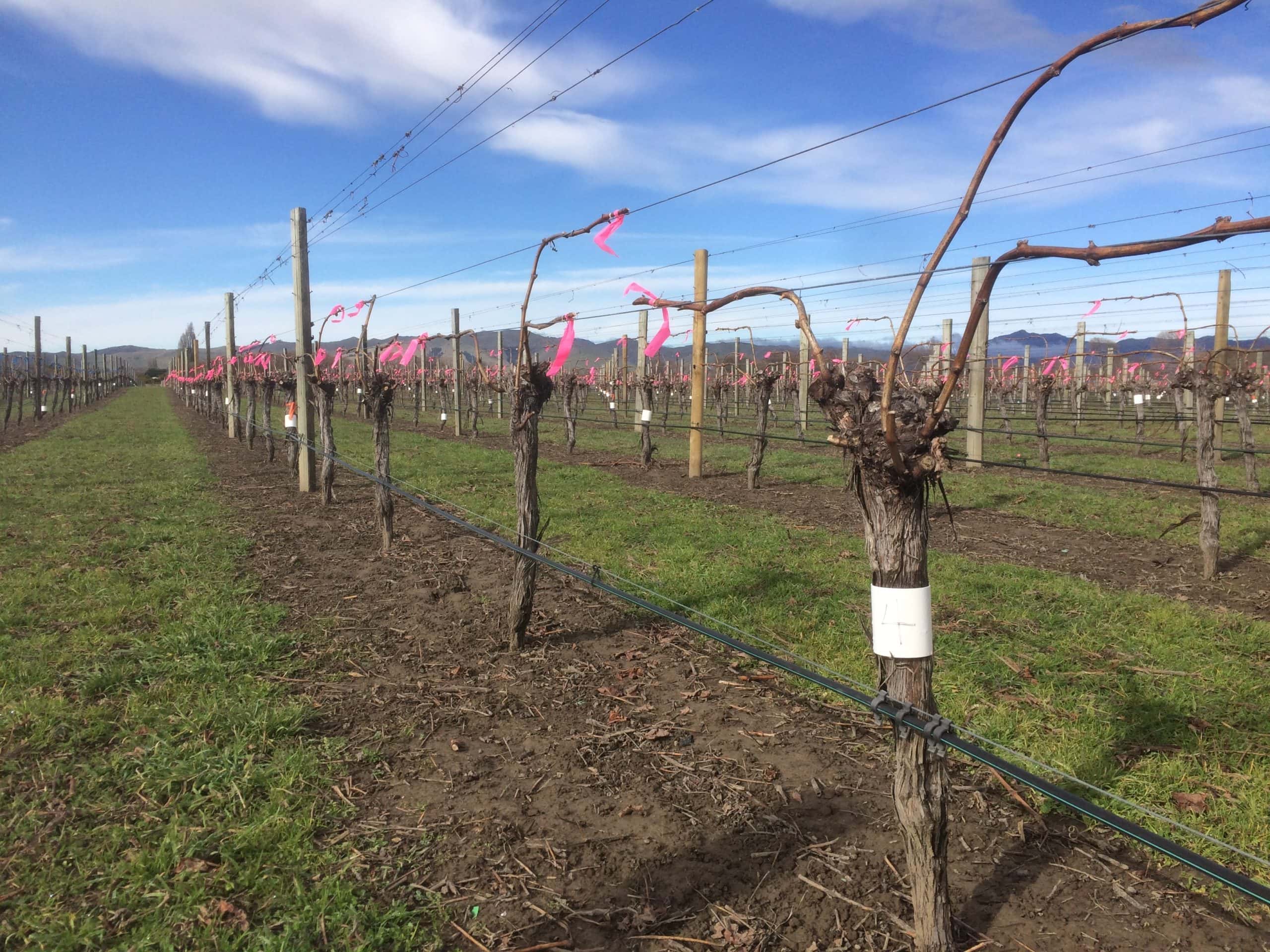Optimising management strategies for grapevine trunk diseases
Mark Sosnowski1, Dion Mundy2 and Eline van Zijll de Jong3
1South Australian Research & Development Institute
2The New Zealand Institute for Plant & Food Research Limited
3Linnaeus Laboratory
Eutypa and botryosphaeria dieback cause significant yield and quality reduction worldwide. They threaten the sustainability of New Zealand vineyards and are becoming an increasing problem as vineyards age, leading to removal of vineyards. Outcomes of previous research by New Zealand Winegrowers (NZW 13-100) has led to registration of fungicides, which can be applied with tractor-driven sprayers post-pruning to protect against infection by grapevine trunk pathogens, and could save the New Zealand industry up to $NZ20 million per annum.
Subsequent research (NZW 16-102) continues to optimise strategies by determining the duration of susceptibility of pruning wounds, validating the curative and preventative properties of fungicides, and monitoring spore inoculum in vineyards throughout the year.
Two vineyard trials were established on 3,640 Sauvignon Blanc vines in the Rowley Vineyard (Marlborough Research Centre) during winter 2017. In the first trial, susceptibility of wounds to dieback diseases when pruned early (early June), mid (mid July) and late (late August) is being evaluated, as well as the duration of susceptibility following pruning. Vines were inoculated with fungal spores that cause eutypa and botryosphaeria dieback from 1 to 84 days after each pruning time. In the second trial, three fungicides: Gelseal Ultra™ (tebuconazole), Megastar™ (flusilazole) and Gem® (fluazinam), were applied to pruning wounds up to 7 days after pruning and inoculated with fungal spores to evaluate curative properties. In addition, wounds were inoculated up to 14 days after fungicide application to evaluate preventative properties. Treated canes will be removed this winter for assessment in the laboratory to determine the wound susceptibility and efficacy of fungicide timing treatments, and the trials will be repeated.

Figure 1. Vineyard trial Sauvignon Blanc vines in the Rowley Vineyard (Marlborough Research Centre0.
Two Burkard spore traps were deployed in vineyards in Hawke’s Bay and Marlborough during winter 2017. The spore traps were activated to begin spore collection and spore tape drums are being regularly changed. Spore tape is being stored in preparation for analysis. Molecular assays have been developed to specifically target eight fungal species attributed with causing grapevine trunk diseases. Tests against 13 non-target species present in New Zealand vineyards indicated high specificity for most trunk disease species. Spore tape artificially inoculated with different concentrations of fungal spores was used to validate DNA extraction procedures. There was strong correlation between spore numbers and quantity of DNA, with as few as three spores able to be detected. Analysis of vineyard spore tape samples will commence soon and results will be reported in future updates.
The outcome of this research will be to develop best-practice recommendations for the critical timing of grapevine pruning and wound protection based on fungicide efficacy, wound susceptibility and spore dispersal. In future, this research will expand to other regions with different environmental conditions and provide localised regional recommendations, which will contribute to vineyard longevity.

Figure 2. Burkard fungal spore trap with solar rechargeable power supply in a Hawke’s Bay vineyard.
This article first appeared in the April/ May 2018 issue of the New Zealand Winegrower magazine.

















